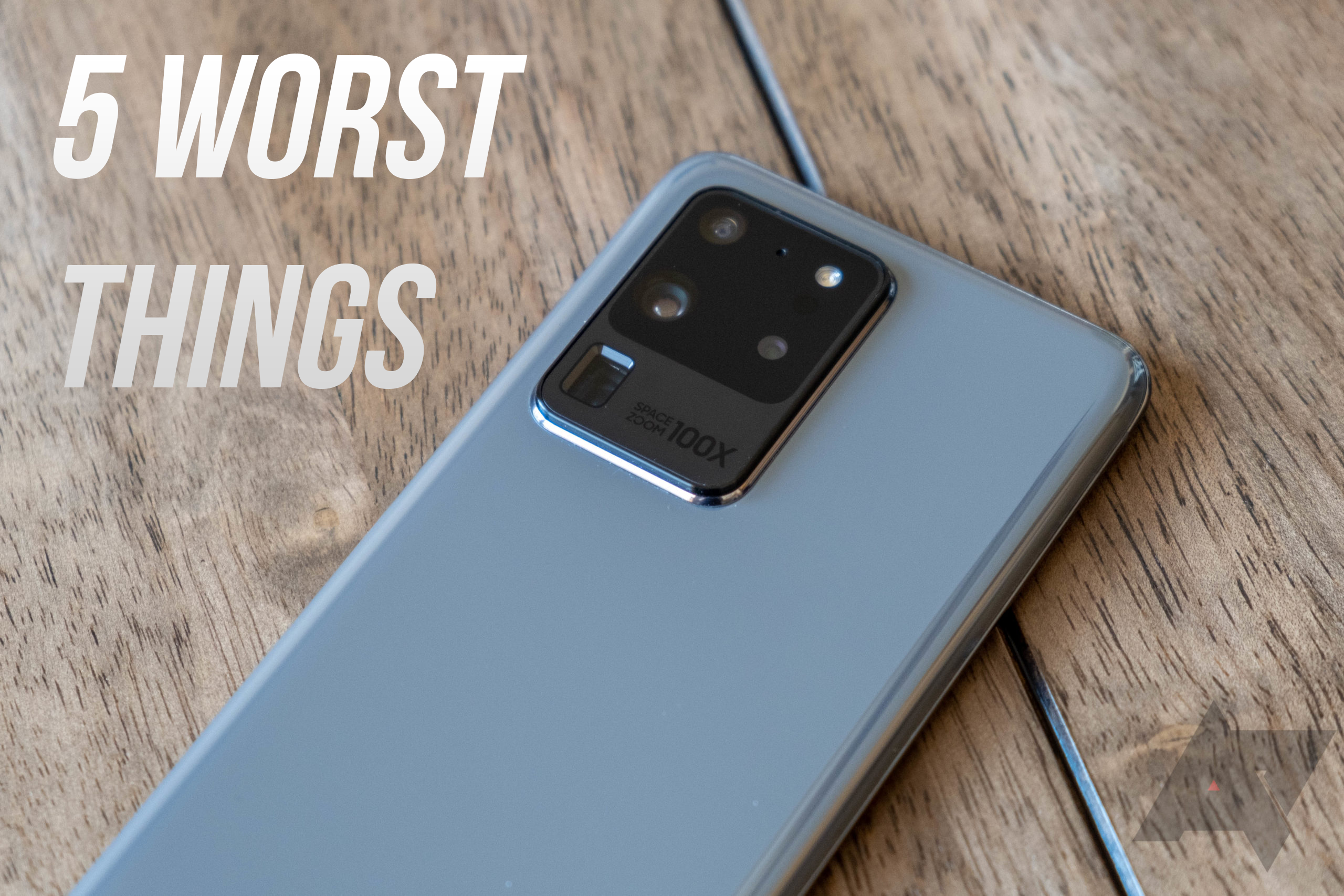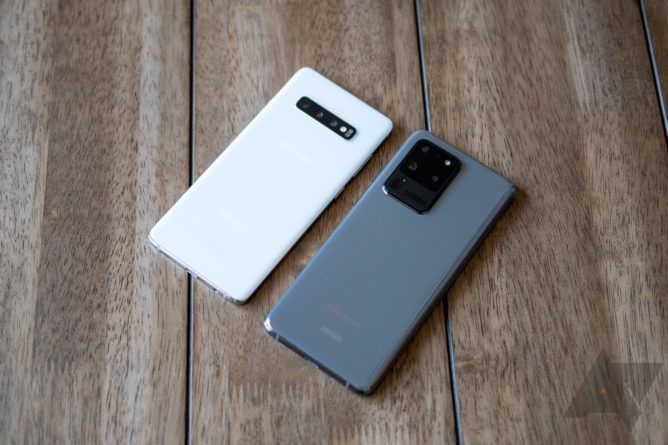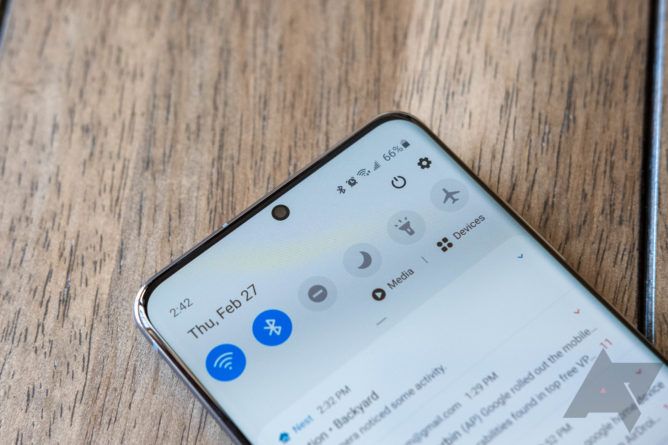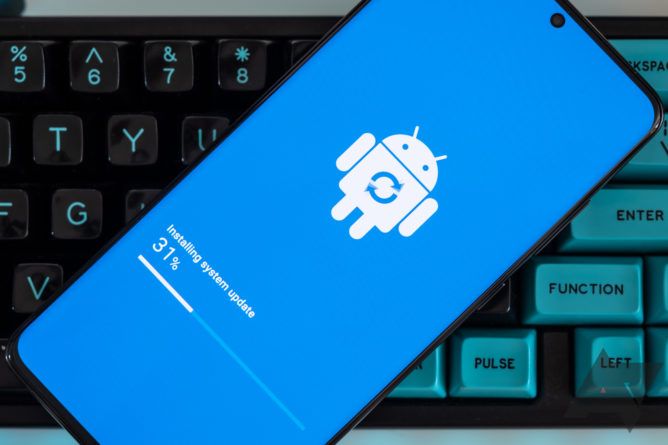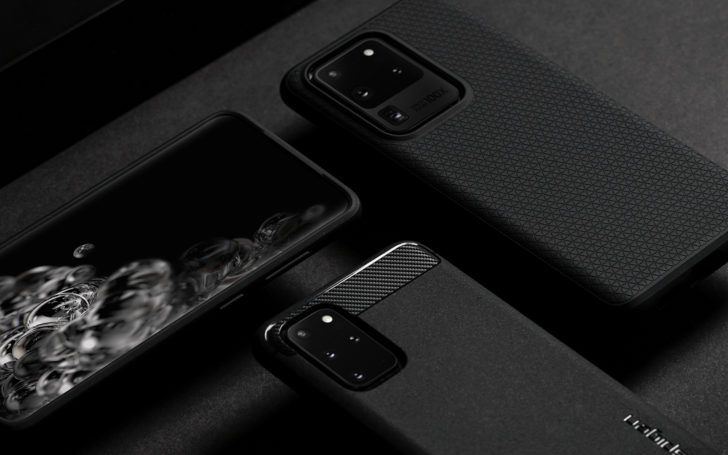We've already run down the five best things about the Galaxy S20 Ultra, so now it's time to look at the ways in which it disappoints. It's not unreasonable to expect a $1,400 phone to be damn near perfect, but the S20 Ultra sadly has a few negatives points that bring its overall score down. You can check out our full review to see what Ryan thought about it, but here's a summary of the least appealing aspects of the S20 Ultra.
The cameras aren't up to scratch
Although the camera system on the S20 Ultra has its good points — it's obviously very flexible and adaptable — it's still not quite good enough for a phone costing so much. The S10 didn't take bad photos, but it couldn't quite compete with the Pixels and iPhones of this world. At the same time, other manufacturers like OnePlus and Xiaomi have continued to close the gap. Samsung really needed to turn things around this year, especially with the astronomical price attached to this phone.
Left to right: 1x, 4x, and 100x zoom
And yet Samsung apparently learned nothing from the likes of Google and tried to fix things as it always does: by throwing big numbers at the problem. There's the 108MP primary sensor, 100x digital zoom on the telephoto, and four cameras it total — that all sounds impressive, but it's nothing without the image processing to back it up. Google has proven year after year that software is the most important part of a smartphone camera. The S20 Ultra is let down by Samsung's classic over-saturation, over-sharpening, and a zoom system that doesn't live up to the boastful '100x Space Zoom' label printed on the back of the phone. The camera isn't awful, by any means, and if the S20 Ultra cost the same as an S10+, it would be much easier to defend. But for $1,400, and with all the marketing bravado Samsung throws around, it's simply inexcusable.
Bigger than big
All three S20 models are sizable phones. The smallest S20 carries the same screen size as the S10+ but is also thicker and heavier. By the time we arrive at the S20 Ultra, things are getting out of hand, literally. I don't mind the heft of the S20 Ultra so much myself, but I generally love big phones and have the hands to match them. I'm in the minority here, however, with most people not wanting to go any larger than the regular S20 — understandably so.
If this were the Pixel line, that would be fine. Other than the battery and display, both sizes of Pixel have identical hardware. That makes buying a Pixel easy; you know that both sizes offer the same experience. That's not the case with Samsung. The Galaxy S20 and S20+ don't have the same zoom capabilities or selfie camera as the S20 Ultra, and the base S20 even loses the depth sensor. Because of this, buying either of the smaller phones will leave you wanting the extra hardware found in the next size up, which forces you into a difficult buying decision.
It ain't cheap
And that's an understatement almost as huge as the phone itself. If it weren't for the Samsung upgrade program, I'd have had to shell out £1,200 for my S20 Ultra ($1,400 in the US). For perspective, my first car cost £800, and while it may not have taken pictures or downloaded apps, it did go a hell of a lot faster. The smaller phones aren't cheap either, with the 5G variants of the S20 and S20+ rolling in for $1,000 and $1,200, respectively. For that price, a phone should be perfect, and the S20 range is not (nor is there such a thing, in fairness).
RIP the headphone jack
The Note 10 lost the headphone jack last year, so we all knew this was coming. That doesn't make it any less painful, though, as the 3.5mm jack is still one of the most useful hardware features a phone can have. I know Bluetooth audio is getting better, and most cars have it etc. But for those of us with older cars, or who play the part of DJ with their friends, that's of little comfort. Getting into a friend's car and having to go through the rigor of connecting to their Bluetooth is more hassle than it's worth most of the time.
Even more annoying is Samsung's decision to exclude a USB-C to 3.5mm adapter. Google and Apple are doing the same, but those phones lost the jack years ago. For a lot of Samsung users, this is a new experience, and a free adapter in the box would've helped. Samsung does include a pair of AKG USB-C buds, though, which is at least something.
Software support is lacking
It's fair to say Samsung is much faster to update its phones these days. It turned things around with the Android 10 rollout — beating plenty of other companies to the punch — but it was still slower than it would ideally be. You still don't buy a Samsung for instant updates.
The more pertinent problem is the number of updates the S20 will receive. Samsung may be excellent at updating old phones with security patches (for three years), but the S20 is only guaranteed two Android version updates. By the time Android 12 arrives next year, this phone will be looking at its last major update. That may not seem so bad in the grand scheme of Android smartphones since it's only really Google that promises three years of major OS updates. But then you consider the price once again — $1,400 is a lot of money to spend on a phone that won't get new firmware after two years, so I think Samsung needs to do better.
A word from our sponsor: Spigen has once again released a bold case lineup, this time for the all-new Samsung Galaxy S20, S20 Plus, and S20 Ultra. Spigen strives to deliver quality protection packed into a slim frame, wrapped in timeless designs made to last.
Discover cases ranging from bold and sleek, to simple and clear, or strong and classic. Check out the full collection for Samsung Galaxy S20, S20 Plus, and S20 Ultra, now at Amazon.

